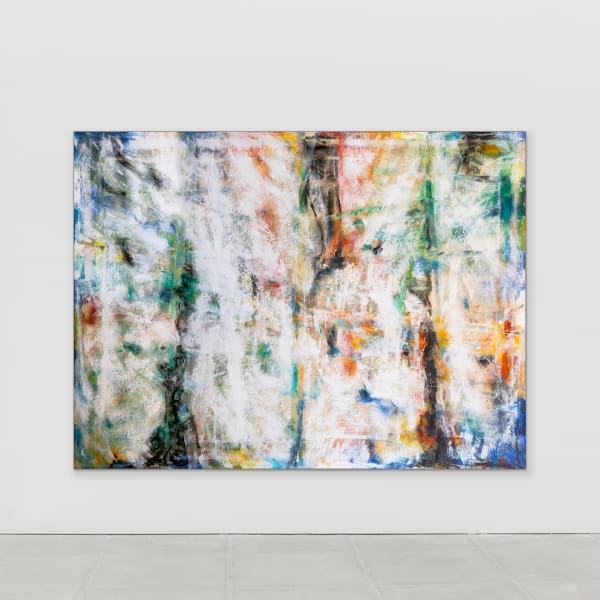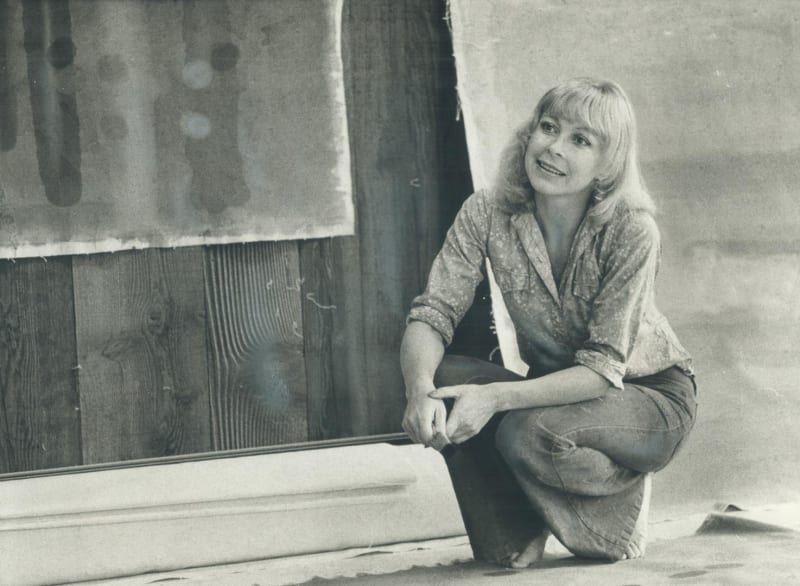Rose Lindzon Canadian, 1931-2023
Rose Lindzon is a Canadian artist of Polish origin who has been active in the art world for over three decades following her studies in Art History at the University of Toronto. She has exhibited her work extensively across Canada and the United States.
Lindzon has had solo exhibitions in major cities including Toronto, Montreal, Calgary, and New York. Notably, in 1988, Robert Swain organized a decade-long retrospective of her work, accompanied by an illustrated catalogue featuring an introduction by Joyce Zemans. Her art is represented in several significant collections, such as the Art Gallery of Ontario, the University of Toronto, McMaster University, the Art Gallery of Hamilton, and the Art Gallery of Nova Scotia, which is currently conducting a comprehensive study of her oeuvre. Additionally, her works are part of various private and corporate collections, including those of Hotz (Zurich, Switzerland), the Scripps Howard Foundation (Kansas City, MI), Chase Manhattan Bank, and Shell Canada Ltd.
The relationship between Rose Lindzon’s artistic practice and archaeology is deeply intertwined, reflecting her profound interest in the layers of history and culture that inform both fields. Her participation in archaeological digs across various regions, including Etruria, Greece, Turkey, and Crete, has not only provided her with firsthand experiences of ancient civilizations but has also profoundly influenced her artistic vision and methodologies.
Lindzon's multimedia works often embody a dialogue between the visible and the hidden. By layering pieces of canvas, she metaphorically creates "walls" within her compositions, suggesting the complexities of historical narratives that lie beneath the surface. This technique evokes the process of excavation itself—where layers of soil and artifacts reveal stories that have been buried over time. Her art becomes a means of exploring the concept of uncovering, paralleling the work of archaeologists who seek to bring to light the remnants of past societies.
Her installation dedicated to the Etruscans exemplifies this connection, as it directly engages with the findings and insights gained from her archaeological experiences. Through this work, Lindzon translates her reflections on Etruscan culture into a visual language, allowing viewers to engage with these historical narratives in a contemporary context. This installation not only showcases her artistic interpretation but also serves as a tribute to the archaeological process, highlighting the significance of cultural heritage.
Positive reviews and critical analysis of her work by respected arts and cultural commentators such as Kay Kritzwizer, Joyce Zemans, John Bentley Mays, and Christopher Hume have appeared in numerous magazines and newspapers including The Globe and Mail, Arts Canada, The Toronto Star, Artsmagazine, The Montreal Gazette, and Le Devoir.
The essay "Grids" by Rosalind Krauss has been highly influential in contemporary art discourse, particularly in its exploration of the grid as both a formal device and a conceptual framework. Krauss argues that the grid serves as a vital structural element in modern art, reflecting underlying themes of order, rationality, and the relationship between abstraction and representation. By examining the grid's role in the works of key artists, Krauss positions it as a symbol of the shifting dynamics of space and perception in art. Her insights have encouraged artists and critics alike to reconsider the implications of geometric structures in their own practices, fostering a dialogue about the intersections of form, meaning, and viewer engagement. This essay has not only contributed to a deeper understanding of modernist aesthetics but has also paved the way for subsequent explorations of spatiality and structure in postmodern art, making it a foundational text in the study of contemporary artistic methodologies.
Lindzon’s use of grids in her artwork resonates with the earlier works of Brice Marden, who is known for his exploration of grid structures as a means of organizing space and conveying emotional depth. Like Marden, Lindzon employs the grid not merely as a formal element, but as a vehicle for conveying layered narratives and historical complexities. In her multimedia compositions, the grid functions to both delineate and connect disparate visual elements, mirroring Marden's approach of intertwining abstraction with personal experience. This shared engagement with the grid allows Lindzon to evoke a sense of continuity and fragmentation, reflecting her archaeological interests in the layers of history. By drawing parallels to Marden’s exploration of grids, Lindzon invites viewers to consider how such structures can reveal hidden meanings and emotional resonances within her own work, further enriching the dialogue between form and content in contemporary art.
Exhibition and Publication Highlights
2009 – Figure, Form and Ground, University of Toronto Art Centre, Toronto, ON
2008 – Rose Lindzon New Paintings, Gallery Moos, Toronto, ON
2007 – Rose Lindzon New Paintings, Gallery Moos, Toronto,ON
2006 – Summer Group Show, Gallery Moos, Toronto, ON
1988 – The Robert McLaughlin Gallery, Oshawa, ON
1982 – Gallery Moos, Calgary, AB
1981 – “Art for Business Sake”, Art Gallery of Ontario, Toronto, ON
1980 – Invitational”, Landmark Gallery, New York, NY
1978 – “Paperworks”, Art Gallery of Ontario, Toronto, ON
1977 – Paris Cultural Centre, Paris, France
1977 – The Canada House Gallery, London, England
1976 – 77 “Abstractions” (official Ontario Cultural Olympic Exhibition)
1976 – The Canada House Gallery, London, England
1975 – Woman as Viewer”, Winnipeg Art Gallery, Winnipeg, MB
1975 – “New Paintings”, Noah Goldowsky Gallery, New York, NY
Joyce Zemans – “Rose Lindzon”, Artscanada, 1974
Gordon Brown – “Rose Lindzon”, Artsmagazine, (New York), 1975
Kay Woods – “Rose Lindzon”, Artscanada, (issue #220/221) 1978
Joyce Zemans - “Rose Lindzon”, Artmagazine 1980
David Burnett - “Toronto – New York”, Artmagazine 1981











